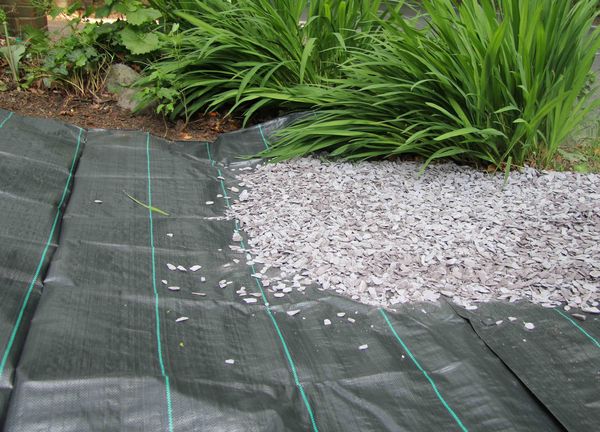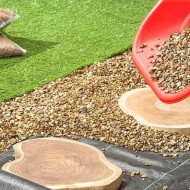Which geotextile is better to use for the safe arrangement of garden paths
Content
The advantages of the canvas
Geotextiles for a garden path are covered for the following purposes:
- Prevention of deformation of the structure. Without geotextiles, the path shrinks over time, concrete, sand and crushed stone push through the soil.
- Prevention of germination of weeds. Roots and pagons are not able to break through the geotextile, even if we are talking about large trees growing on a plot of land near the garden path.
- Reduces soil erosion. High-quality geotextile acts as a windscreen, and at the same time does not transmit ultraviolet light.
- Insulates sand and gravel from the ground. This will help to avoid shrinkage even with significant static loads on the structure.
- Protects the track when soil heaving. This is true for regions with a high groundwater table. Geotextile in this case acts as a leveling deformation layer.
And geotextiles greatly simplify the small repair work on the paths, as it allows you to quickly lay a corrugation under them for laying an electric cable, water supply pipes, etc. And with all this, the canvas is cheap: the average price per square meter is from 40 to 100 rubles.
And you need to understand that geotextiles are not a substitute for a sand cushion. This is a soil strengthening agent. Must be used on slopes.
Video "Geotextile for a garden path"
In this video, you will learn which geotextile is best to use for your garden path.
Criterias of choice
There are the following main types of geotextiles for garden paths:
- Polyester. Cheap, it is permissible to use it in the installation of drainage systems, under the blind area of a private house, etc. Their only drawback is their low resistance to acidic and alkaline environments, all sorts of chemicals. Average service life is from 5 to 10 years.
- Polypropylene. It is synthetic, therefore it is not subject to rotting, fungal attack. Good moisture permeability, suitable for garden paths, which are at the same time a drainage layer.
- Multicomponent. Sometimes it is called "secondary", as it is made from secondary raw materials, as a type of textile waste. Its structure is porous, uneven, so it is considered the worst option, but it is very cheap. It is not recommended to use it for garden paths.
- Fiber. It is not geotextile in the direct sense. This is a mixture of fibers with sand, which is filled between the soil and the path itself. Such a design is expensive, but it is also the most reliable - it protects 100% from mixing of layers.
Accordingly, polyester and polypropylene geotextiles are most often laid. Fiber fiber is recommended to be used only in the case of very close to the surface of the groundwater, when in the spring at the site or at the dacha their level exceeds the soil boundary.
Which one is better to choose in terms of density? This parameter is indicated in grams per square meter. In most cases, geotextiles with a density of 42 to 400 g / m² are found. It is for garden paths that values of 100-200 g / m² are needed.The denser one will not allow moisture to pass through, and with a value of up to 100 g / m² it belongs to the category of agrofibre - it is used when arranging greenhouses, greenhouses or to protect seeds from birds.
How to work with the material
Geotextile is laid only on a flat, smooth surface, free of roots and debris. Experts recommend laying it only on a layer of fine gravel or pebbles, but if it is laid directly on the ground, then only in 2 or 3 layers. And at the same time, it is imperative to take with a margin of 5-10 cm, since on the backfill the fabric is slightly deformed, taking the shape of the surface under it.
The optimal level of laying geotextiles is from 35 to 40 cm. From above it is covered with fine-grained river sand, preferably washed. Then all this is rammed or simply stood for 3-4 days, and then the garden path itself is mounted.
Without geotextiles, in principle, it is also possible to mount garden paths. But in this case, their service life is reduced to only 3-5 years, after which cracks appear, weeds begin to germinate, and overflows of soil form along the edges of the path.
Therefore, laying geofabric is a cheap way to preserve the original appearance of the structure for decades.




